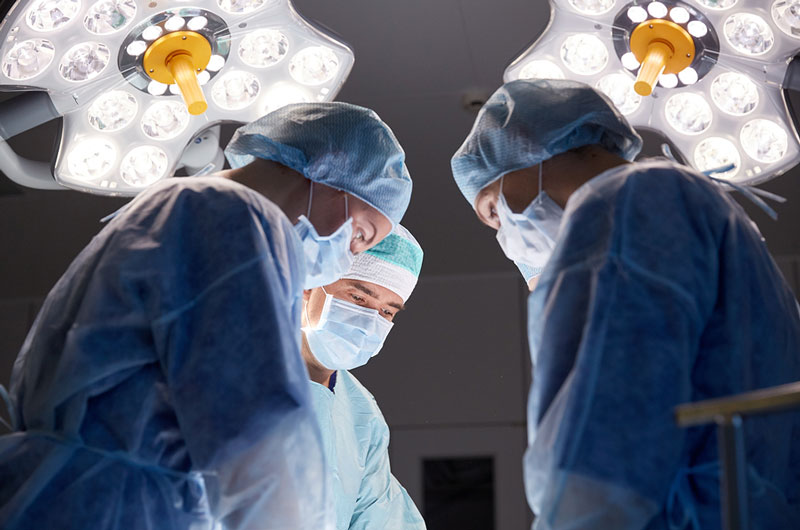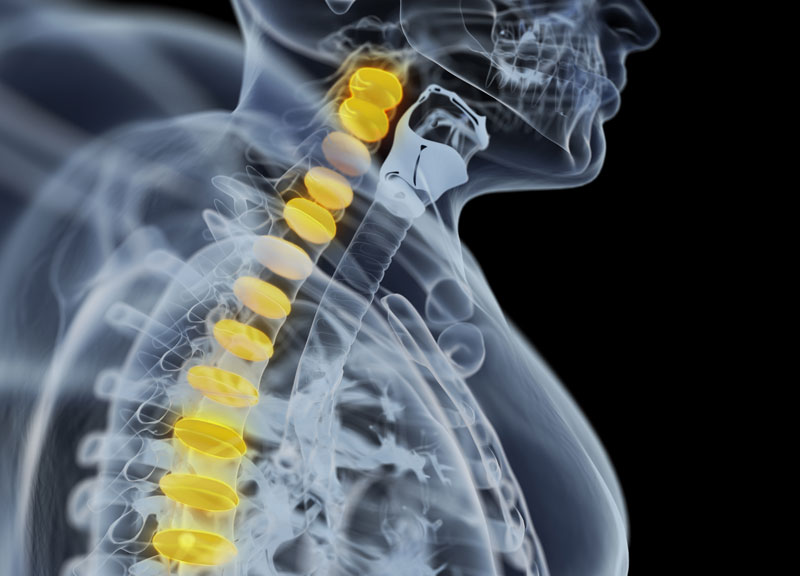A Cervical spinal fusion also known as (arthrodesis) is a surgery that joins selected bones in the neck. There are various methods of performing a cervical spinal fusion:
- A metal implant can be used to keep the vertebrae together while the new bone grows between them.
- In certain cases a metal plate can be screwed into the bone, joining adjacent vertebrae.
- Bone can be taken from elsewhere in your body or a bone graft can be obtained. The bone is used to make a bridge the vertebrae that are next to each other, also known as the adjacent vertebrae. This bone graft helps generate growth of new bone. In certain cases man-made or artificial fusion materials may also be used.
- An entire vertebra can be surgically removed, and the remaining spine is then fused together.
- A spinal disc can be surgically removed and the adjacent vertebrae are fused together.
This cervical spine fusion procedure can be done through an incision on the front known as (anterior) or the back known as (posterior) of the neck.
What To Expect after a Cervical spinal fusion
This surgery generally requires a very short stay in the hospital. You may need to wear a special cervical collar on your neck while you recover.
Why is a Cervical spinal fusion performed?
Cervical spinal fusion may be performed for several reasons:
- After an injury, this procedure can be performed to stabilize the neck and prevent a bone fracture from damaging the spinal cord. Damage to the spinal cord can result in paralysis.
- To help treat conditions such as misalignment of the vertebrae.
- As a follow-up procedure to treat a herniated disc, spinal stenosis, long term effects of rheumatoid arthritis, an infection, spinal tumors, or spinal deformities.
What is the success rate of a Cervical spinal fusion?
If a patient has symptoms such as weakness in the arm or numbness, in certain cases this may suggest that a neck problem is causing a pinched nerve also known as (radiculopathy). Spine surgery may help you feel better faster. There is no clear evidence that spine surgery is any better than a conservative non surgical treatment in the long run. Research also suggests that a complex spine surgery that includes a spinal fusion is not better than a simpler surgery to take the pressure off the nerve.
If you only have neck pain, with no clear signs of a pinched nerve, neck surgery will not help.
What are the risks?
Any surgery and the use of general anesthesia has some risks. The risks associated with a cervical spine fusion vary depending on your age and health, diagnosis, and type of procedure used. Risks include:
- Nerve or spinal cord injury.
- Infection.
- Excessive bleeding.
- Pain in a bone graft site (donor site).
- Risks of general anesthesia.
- Blood clots in deep veins.
- Failure of the fusion, breakage of metal implants (if used), or even both.
- Graft rejection.
If you would like to make an appointment and learn more about the Cervical spine fusion procedure, contact Premier Brain and Spine at 786-456-4104.





